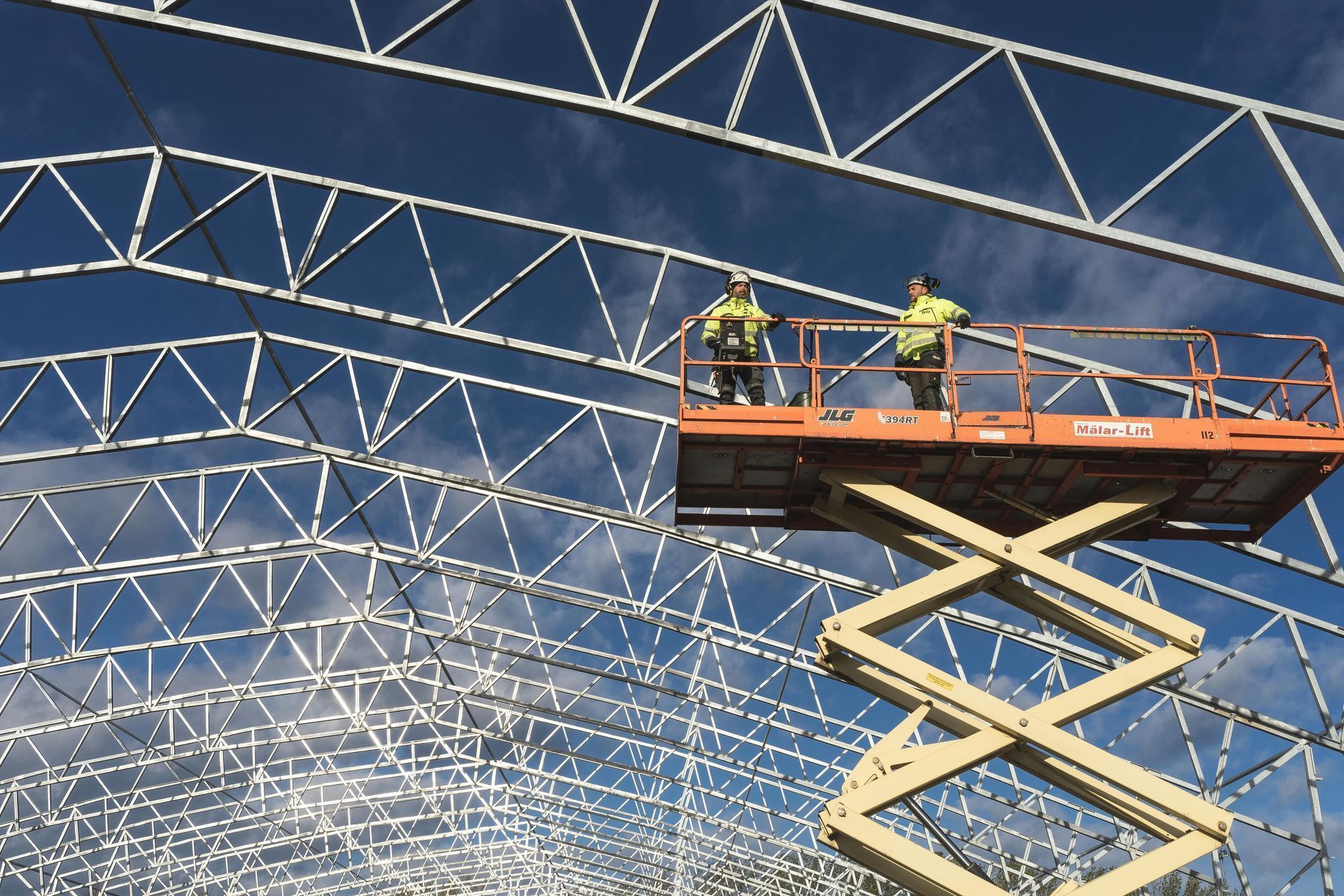The Future of Sustainable Construction: Eco-Friendly Innovations in Building Materials
Embracing Eco-Friendly Innovations in the Construction Industry

The construction industry is undergoing a significant transformation, driven by the urgent need for sustainable practices and eco-friendly innovations. As the world grapples with climate change and environmental degradation, the focus on sustainable construction materials has never been more critical. This article explores the latest advancements in eco-friendly building materials, their benefits, and real-world applications, while highlighting the construction industry's commitment to reducing its carbon footprint.
The Importance of Sustainable Construction
Sustainable construction aims to minimize the environmental impact of building projects by using eco-friendly materials and practices. This approach not only helps conserve natural resources but also enhances the overall quality of life by promoting healthier living environments. Key elements of sustainable construction include energy efficiency, water conservation, waste reduction, and the use of renewable resources.
Key Innovations in Sustainable Construction Materials
- Recycled Materials: Giving Waste a Second Life
- Recycled materials are becoming increasingly popular in the construction industry. These materials not only reduce the demand for virgin resources but also help manage waste effectively. Examples of recycled materials include reclaimed wood, recycled steel, and recycled concrete.
- Reclaimed Wood: Sourced from old buildings, barns, and warehouses, reclaimed wood adds a unique character to new constructions while reducing the need for fresh timber.
- Recycled Steel: Steel is one of the most recycled materials globally. Using recycled steel in construction reduces energy consumption and greenhouse gas emissions associated with steel production.
- Recycled Concrete: Crushed concrete from demolished structures can be reused as aggregate in new concrete, reducing the need for new raw materials.
- Biodegradable Materials: Reducing Long-Term Environmental Impact
- Biodegradable materials decompose naturally over time, minimizing their long-term environmental impact. These materials are typically made from natural, renewable sources and are free from harmful chemicals.
- Bamboo: Bamboo is a fast-growing plant that can be harvested sustainably. It is strong, versatile, and can be used in various construction applications, from flooring to structural elements.
- Cork: Harvested from the bark of cork oak trees, cork is a renewable and biodegradable material used for insulation, flooring, and wall coverings.
- Mycelium: Made from the root structure of fungi, mycelium is a biodegradable material that can be used for insulation, bricks, and even furniture.
- Low-Carbon Concrete: Revolutionizing the Construction Industry
- Concrete is the most widely used construction material, but its production is a significant source of carbon emissions. Low-carbon concrete aims to reduce these emissions by incorporating alternative materials and innovative technologies.
- Fly Ash and Slag: Replacing a portion of traditional Portland cement with fly ash or slag, byproducts of industrial processes, reduces the carbon footprint of concrete.
- Carbon Capture and Utilization: Technologies that capture carbon dioxide emissions during cement production and incorporate them into concrete can significantly reduce the material's overall carbon impact.
- Geopolymer Concrete: Made from industrial byproducts like fly ash and slag, geopolymer concrete offers a low-carbon alternative to traditional concrete.
- Insulation Materials: Enhancing Energy Efficiency
- Effective insulation is crucial for energy-efficient buildings. Innovative insulation materials not only reduce energy consumption but also improve indoor air quality and comfort.
- Aerogel: Known for its exceptional thermal insulation properties, aerogel is a lightweight material used in various high-performance applications, including building insulation.
- Hempcrete: Made from a mixture of hemp fibers, lime, and water, hempcrete is a natural, breathable, and energy-efficient insulation material.
- Cellulose Insulation: Made from recycled paper, cellulose insulation is an eco-friendly option that offers excellent thermal and acoustic insulation properties.
Real-World Applications of Sustainable Construction Materials
- The Bullitt Center: A Model of Sustainable Design
- Located in Seattle, Washington, the Bullitt Center is often referred to as the greenest commercial building in the world. This six-story office building incorporates numerous sustainable materials and practices, including:
- Reclaimed Wood: Used for interior finishes, reclaimed wood adds warmth and character to the building.
- Low-Carbon Concrete: The building's foundation and structure use low-carbon concrete, reducing its overall carbon footprint.
- Rainwater Harvesting: The Bullitt Center collects and treats rainwater for all its water needs, significantly reducing water consumption.
- One Central Park: A Vertical Garden in Sydney
- One Central Park in Sydney, Australia, is a mixed-use development known for its innovative use of sustainable materials and green technologies. Key features include:
- Green Walls and Roofs: Covered with over 250 species of native plants, the green walls and roofs provide natural insulation, reduce the urban heat island effect, and improve air quality.
- Recycled Materials: The building incorporates recycled steel and concrete, reducing the demand for new raw materials.
- Energy Efficiency: Advanced glazing, shading devices, and a tri-generation plant help minimize energy consumption.
- The Edge: A Smart and Sustainable Office Building
- Located in Amsterdam, The Edge is a state-of-the-art office building that sets new standards for sustainability and smart technology integration. Highlights include:
- Energy Efficiency: The building's design maximizes natural light and uses advanced LED lighting systems controlled by a smart network, reducing energy consumption.
- Water Conservation: Rainwater harvesting and greywater recycling systems minimize water usage.
- Sustainable Materials: The Edge incorporates low-carbon concrete, recycled materials, and biodegradable insulation, contributing to its overall sustainability.
Environmental Benefits of Sustainable Construction Materials
- Reduced Carbon Emissions
- Using sustainable materials like low-carbon concrete, recycled steel, and reclaimed wood significantly reduces carbon emissions associated with construction. These materials require less energy to produce and often utilize waste products from other industries, further minimizing their environmental impact.
- Resource Conservation
- Sustainable construction materials help conserve natural resources by reducing the demand for virgin materials. For example, using recycled materials like steel and concrete reduces the need for mining and quarrying, which can have detrimental effects on the environment.
- Waste Reduction
- By incorporating recycled and biodegradable materials, sustainable construction practices help manage waste more effectively. Materials that would otherwise end up in landfills are given a new life, reducing the overall volume of construction waste.
- Enhanced Energy Efficiency
- Innovative insulation materials and energy-efficient design elements help reduce the energy consumption of buildings. This not only lowers greenhouse gas emissions but also reduces operating costs for building owners and occupants.
- Improved Indoor Air Quality
- Sustainable materials often have lower levels of volatile organic compounds (VOCs) and other harmful chemicals, resulting in healthier indoor environments. Improved indoor air quality enhances the well-being and productivity of building occupants.
The Future of Sustainable Construction
The construction industry's shift towards sustainability is expected to accelerate in the coming years, driven by advances in technology, stricter regulations, and growing awareness of environmental issues. Key trends that will shape the future of sustainable construction include:
- Increased Adoption of Circular Economy Principles
- The circular economy aims to eliminate waste by designing buildings and materials for continuous reuse and recycling. This approach encourages the use of modular construction techniques, adaptable building designs, and materials that can be easily repurposed.
- Integration of Smart Technologies
- Smart technologies, such as IoT sensors and building management systems, will play a crucial role in optimizing the performance of sustainable buildings. These technologies can monitor energy usage, indoor air quality, and other environmental parameters in real-time, enabling proactive management and maintenance.
- Advancements in Material Science
- Ongoing research and development in material science will lead to the discovery of new sustainable materials with enhanced properties. Innovations like self-healing concrete, bio-based plastics, and advanced composites will offer new possibilities for eco-friendly construction.
- Collaboration and Knowledge Sharing
- The construction industry will increasingly collaborate with other sectors, such as manufacturing, technology, and academia, to drive innovation and share best practices. Collaborative efforts will accelerate the adoption of sustainable materials and practices, benefiting the entire industry.
- Stricter Regulations and Standards
- Governments and regulatory bodies worldwide are implementing stricter environmental standards and building codes to promote sustainability. These regulations will push the construction industry to adopt eco-friendly materials and practices, driving significant progress towards sustainability goals.
Conclusion
The future of sustainable construction is bright, with eco-friendly innovations in building materials leading the way. By embracing sustainable practices, the construction industry can significantly reduce its environmental impact, conserve resources, and create healthier living environments. The examples and advancements highlighted in this article demonstrate the potential of sustainable construction to transform the built environment for the better.
As the industry continues to evolve, the commitment to sustainability will become even more critical. By staying informed about the latest innovations and trends, construction professionals can play a pivotal role in shaping a more sustainable future.
#SustainableConstruction #EcoFriendlyBuilding #GreenBuildingMaterials #Sustainability #RecycledMaterials #LowCarbonConcrete #BiodegradableMaterials #EnergyEfficiency #ConstructionInnovation #SmartBuilding










